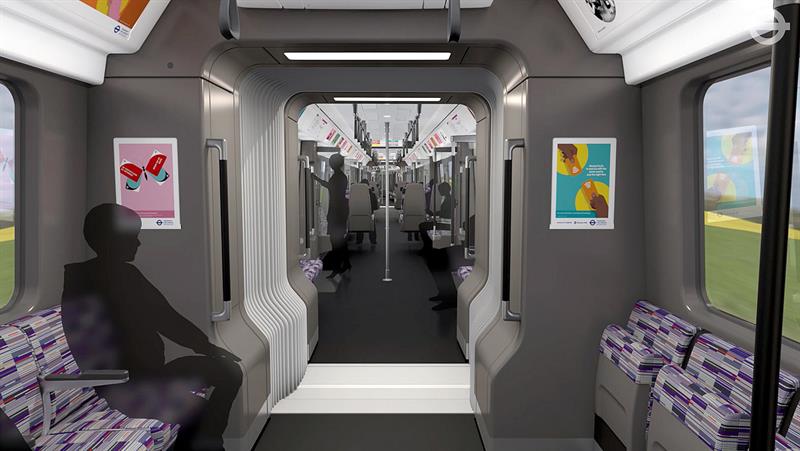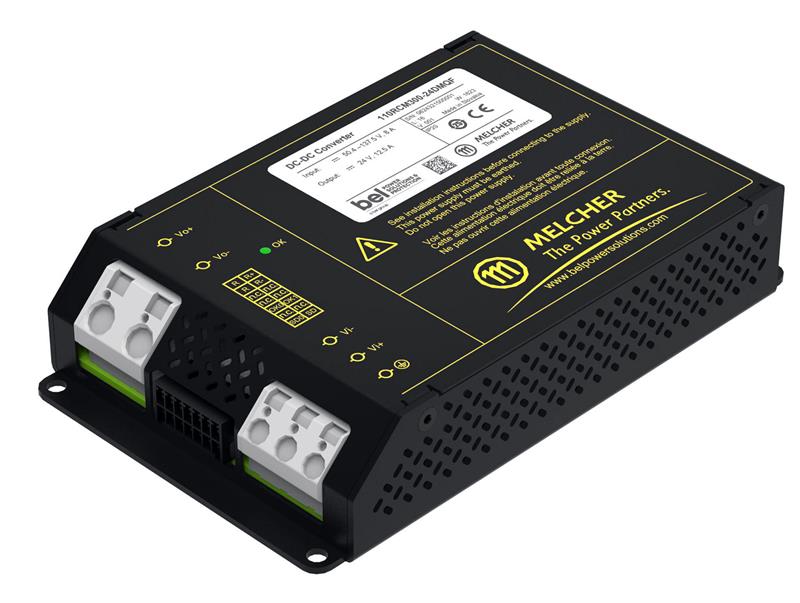Alongside brand new carriages, however, there is also a growing trend for retrofitting existing carriages, which means new LED lighting, infotainment and connectivity systems. Both trends mean there is increased demand for railway compatible power supplies.
As with all electronics in rolling stock, power supplies are subject to challenging environmental conditions, including high temperatures in confined spaces and the heavy vibration felt by body or axle-mounted systems.
“Ordinary industrial or high reliability power supplies will not be used in what is a heavily regulated sector; the demands are extremely challenging and so specific that specialist power supplies designed and built only for railway applications have to be used and they have to comply with the relevant standards,” explains Philip Lechner, product marketing manager - power, with Avnet Abacus. “It tends to be the case that only traditional brands that can point to long histories, traceability and qualified production are used by railway equipment manufacturers.”
Power supply applications in trains can be split into mission-critical and non-mission critical. Mission-critical power systems, which power traction and braking subsystems, require the highest reliability possible; there are heavy financial penalties for operators if trains break down, for example, blocking tracks, while the safety implications of a brake failure are obvious.
Non-mission-critical applications basically cover everything else on board a train carriage, from the Wi-Fi routers to the air conditioning and security cameras. These non critical applications can include sensitive electronics with complex power supply needs, such as CPUs and analogue circuitry.

Non-mission critical applications include: lighting, air conditioning and security cameras
All rolling stock electronic equipment, from braking systems to LED lighting, must meet the same European quality standard – EN50155. Replacing older standards, such as BRB/RIA in the UK and NF F 01-510 in France, EN50155 is an umbrella standard, referring to various other standards where necessary in order to define the environmental conditions in which power supplies must operate, as well as their electrical and mechanical performance parameters.
According to Lechner: “Rail power supplies experience a wide range in input conditions, including brownout operation, transients and spikes. Power comes from batteries located at the front or rear of the train and travels down cables, which make it susceptible to interference. Since the same batteries are also used to power high power loads, such as starter motors, the supply can fluctuate dramatically.”

EN50155 defines nominal input voltages as 24, 48, 72, 96 and 110V, with 110V representing the output from the train’s lead acid batteries. The other figures represent common bus voltages found in trains. The continuous input voltage range required is between 0.7x to 1.25x nominal. Short-term fluctuations need to be allowable for a brownout level of 0.6x nominal for 100ms and a transient level of 1.4x nominal for 1s. In practice, this means equipment should be able to deal with the full 0.6 to 1.4x input voltage at all time, as the regulations strictly prohibit any deviations in the output.
As a result, EN50155-compliant power supplies have to be able to produce an output, despite total interruptions of up to 10ms in the input voltage. This is typically achieved by using bridging capacitors at the input. These capacitors perform a smoothing function, helping the power supply to deal with the required DC ripple factor of 15% of nominal input voltage, although a diode is also required for reverse polarity protection, which also smooths the input.
“EN50155 is very strict on EMC, ESD and transient requirements, referring to EN50121-3-2,” Lechner points out (pictured right). “The latest version of this standard extends its radiated emissions scope up to 6GHz to avoid interfering with new short-range wireless standards in the 5GHz band. ESD discharge levels by direct contact or through the air are defined, as well as the limits for surges and fast transient bursts.”
The environmental parts of the standard are just as stringent. There are four operating temperature classes to which power supplies can conform, with -40 to 70°C being the most stringent. The devices are also expected to withstand 15°C over-temperature for 10 minutes using only baseplate conduction/convection cooling. Humidity levels and shock and vibration requirements are also covered by reference to EN61373.
Examples of power supplies suitable for the rail industry include the ERM family, from Artesyn Embedded Technologies. This complies with EN50155 and 50121-3-2 and has been tested to the vibration and thermal shock requirements of EN61373. It is intended for rolling stock applications such as engine management, traction control, door control, video surveillance, communications, entertainment, lighting and other on-board electrical equipment.
Another, from Gresham Power Electronics, is the CPCI-3U-DC-300W RL, a CompactPCI format device that takes an input ranging from 66 to 160V DC and provides four outputs; +5V DC at 30A, +3.3V at 40A, +12V at 5A and -12V at 0.5A. Capable of supplying 300W with forced air cooling, the supply is protected against output overload, short circuit and over-temperature with automatic recovery on removal of overload condition.
However, since all power supplies must conform to EN50155, a system designer working on, say, a 100W LED lighting retrofit system, is faced with having to choose a power supply with similar performance levels, reliability and longevity to those intended for use in the braking and control systems.

“These power supplies are manufactured to last a minimum of 20 years and will tend to carry a premium price tag. Is that economic for a simple cabin lighting application? It could be described as ‘overkill’, to say the least, but until recently rolling stock system designers have had no other option,” says Lechner.
In response, Bel Power has developed, under its Melcher brand, a series of chassis mounted power supplies which are intended to not only be more cost effective than a traditional railway power supply, but also fully compliant with EN50155 (see left).
“Despite a more cost-effective construction and the use of components that wouldn’t be found in a traditional railway power supply, such as electrolytic capacitors, the RCM series can meet EN50155 while maintaining a demonstrated mean time between failures of more than 300,000 hours,” Lechner contends.
As rolling stock around the world is upgraded to meet modern expectations of passenger comfort levels, features such as infotainment, LED lighting and passenger communications repeaters will become more widely installed.
The complexity of these systems means that decentralised power architectures will become more prevalent in rolling stock.













